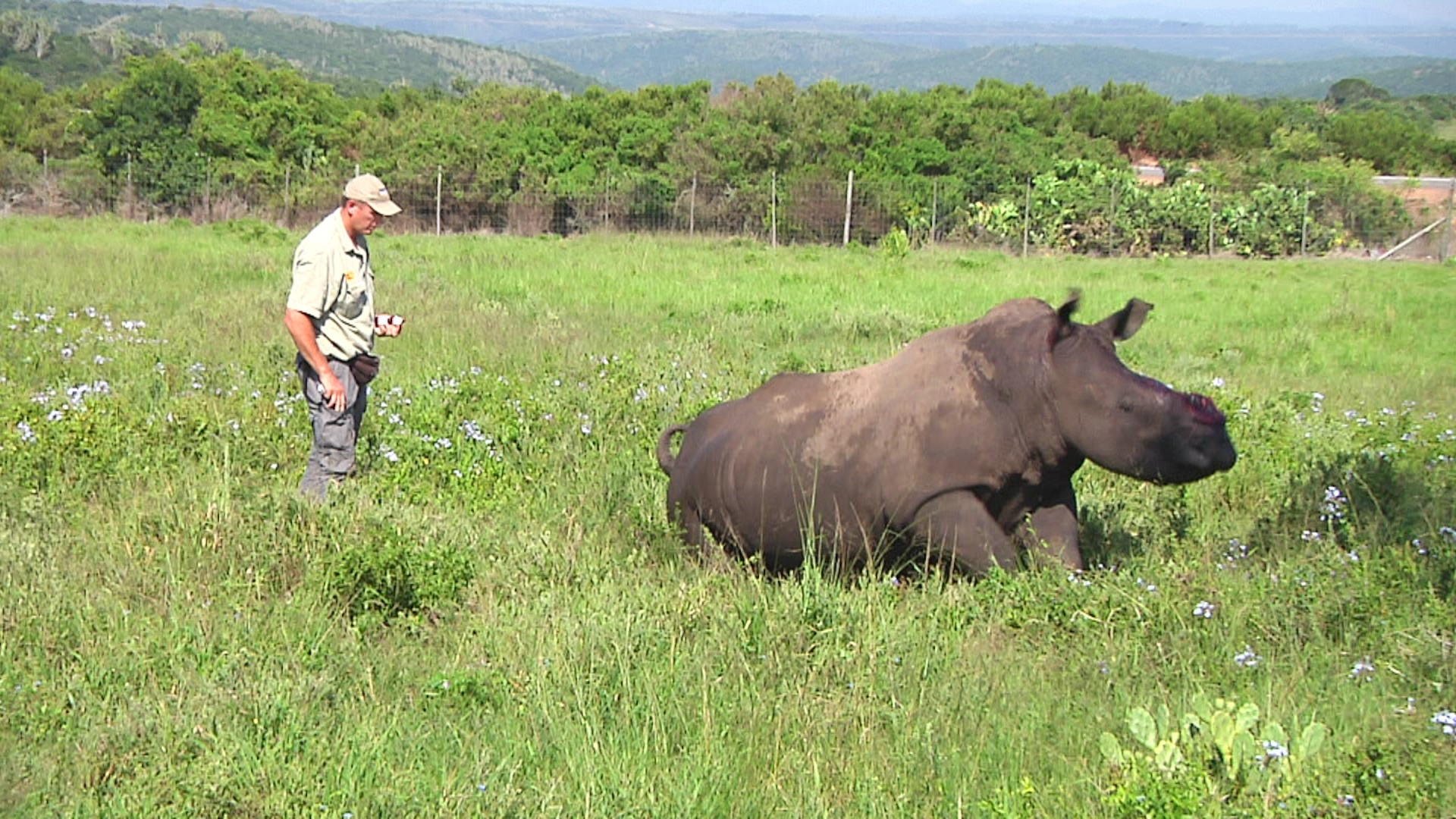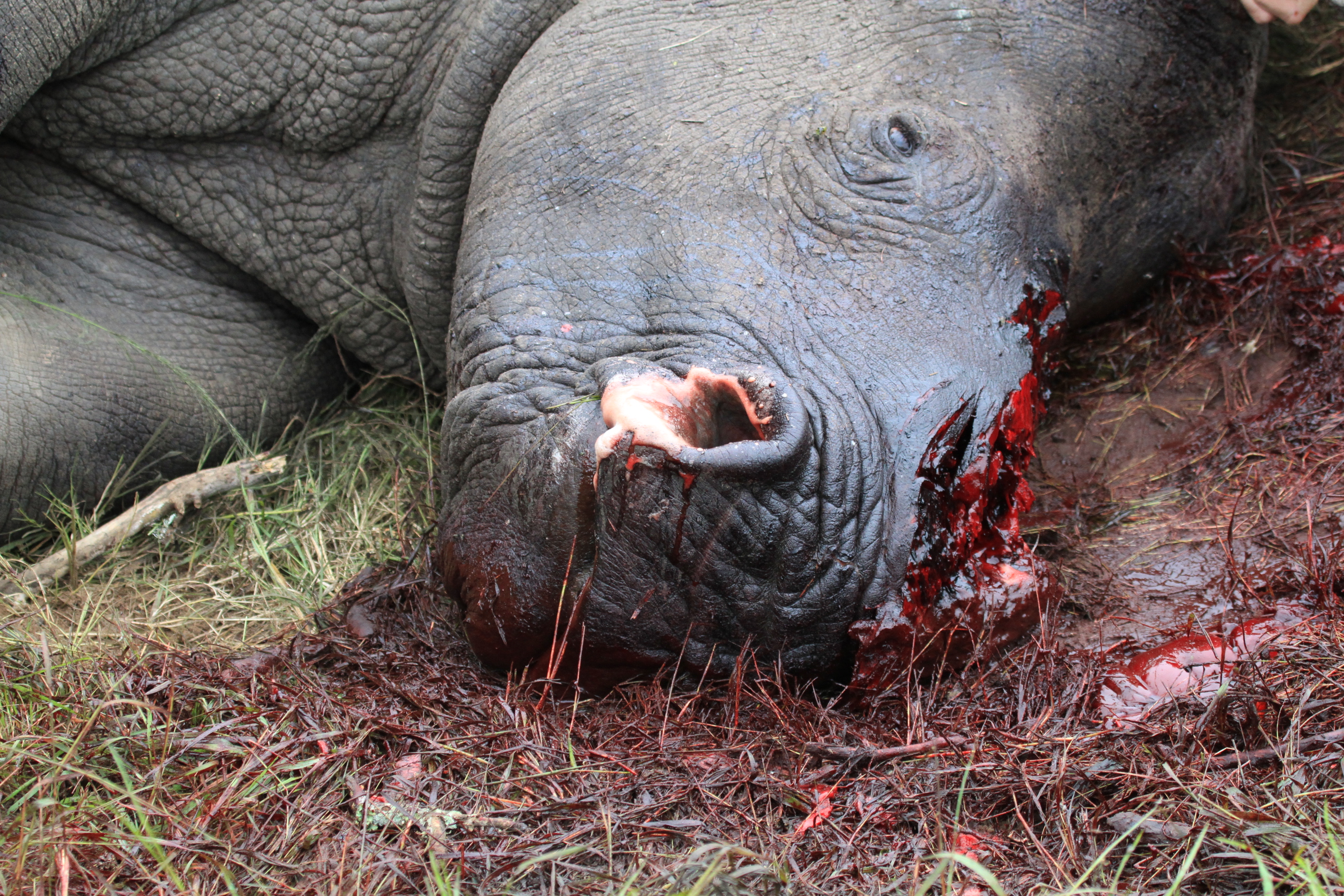Thandi's Story - Part II - Kariega Game Reserve
Part II in a four part blog about the poaching of Thandi and Themba at Kariega Game Reserve, of the people closest to them, and of their path to recovery and struggle in the fight against poaching. Written by local journalist, Lauren Flynn.
Read Part I here.
Courage in the loss of hope
Part II
By Lauren Daisy Flynn
Dr William Fowlds has become known as “the rhino man”. He drives around the Eastern Cape responding to rhino poaching calls, each time feeling sadness yet hope that maybe he can save the next one. His time and vehicle are sponsored by Investec Rhino Lifeline in the desperation that Dr Fowlds may be the key to the rhino’s survival.
Since 2011, Dr Fowlds has become consumed with the movement to save the rhinos. Travelling to China in 2012, and Vietnam this year, he hopes to spread the word to bring awareness to the ignorant horn consumer market in Asia and to kill the disease from the source.
February 2011 was Dr Fowlds’ introduction to the epidemic when a rhino he held dear was brutally hacked with a panga. His name was Geza – the Naughty One. Geza was born in January 2006 at Amakhala, the second calf of the reserve’s first rhino Nomabongo – the Proud Lady.
Geza was his most significant case. They shared happy memories. Geza was his first poached survivor.
“People have never seen a rhino lying there, trying to fight for its life. Nothing can prepare you what you feel or see. The experience I went through with Geza, it changed me forever.”
Dr Fowlds had sent the playful young rhino to Kariega Game Reserve three years prior to his demise. What he saw that day at Kariega was scarred into his mind forever. He can recount the day clearly. He approached a small clearing enclosed by bush, and came face to face with an animal standing, hardly recognisable as a rhino. Soon he came to learn it was Geza.
He whispered to Geza in disbelief and shame. He knelt down, and under his breath he cried, “I am sorry boy, I am so, so sorry.”
Geza could not be saved.
The damage to his face and skull were too extensive. Dr Fowlds made the final decision to inject an overdose of opioid anaesthetic into Geza so his pain would subside and he would slip away. Bang. A heavy calibre bullet to the brain ensured his escape from this living hell.
Dr Fowlds made sure Geza’s bereavement would be remembered. He publicised the event and continues to share his story, reaching all corners of the planet. He learnt feverishly about a poached rhino’s condition and chances of remedy in Geza’s autopsy. Dr Fowlds could never have anticipated Geza being a milestone for future victims like Thandi and Themba, when the young naughty calf was born into the Amakhala family.
When he arrived at Kariega just over a year later on 2 March 2012, he was as prepared as he could be. But nothing could truly prepare him for what he saw.
*****
Themba was discovered half an hour after Bull 84. He was in a gathering of trees and bushes a couple hundred metres away. He was lying down, awkwardly, worryingly so. They speculated that he had been under dosed. He was starting to stir, to face a gruesome reality he would never come to understand. Dr Fowlds shot the antidote into his limp body to give him a helping hand onto his feet.
Themba rises to his feet pictured below.

Thandi was the last to be found. She lay motionless at the bottom of the hill another couple of hundred metres away. Dead still. She lay in a pool of twenty to thirty litres of her own blood. She was in the worst condition. Foam bubbled out of her nostrils; Dr Fowlds feared possible bad lung pathology. Her face was extremely traumatised. And from the way she was lying, it was obvious she had been lying there for the whole night.
Pictured below - Thandi as she was found on March 2, 2012.
Dr Fowlds looked ominously at her. That was his first meeting with Thandi and his first thoughts were, “we’re not going to be able to save this one.”
Her breathing bubbled red. The whole front of her face had been hacked off with an axe. It was a messy job. Splinters of her butchered bone pierced into her own flesh. Meat hung from the front of her head. Blood gushed out of her hornless face. Dr Fowlds administered a shot of antidote to wake her up. The plan was to get her awake and moving in order to assess the trauma. But Themba had turned for the worst, leaving Thandi to come to terms with her pain – but not alone – in the observant eyes of Shaun.
This video was taken on Day 1 of the poaching by Paul Mills. Graphic content - viewers are advised.
Dr Fowlds injected another dosage of antidote into Themba’s bloodstream. Adrenaline shot through his struggling body. Themba jumped up, shocked, onto his feet, but only three of them. The fourth leg dangled lifelessly behind him. He tried to stand on it, failing miserably with every attempt. The right hind leg dragged behind him. It was disheartening.
When a rhino lies down for a long period of time the circulation of blood flow can be compromised. An average adult white rhino can weigh anywhere from 1,440kg up to 2,400kg and this immense pressure on their own limbs can be detrimental. This means no oxygenated blood can reach the muscle, tissues and fibres. In simple terms, it is a severe case of pins and needles like a dead leg. However, the dead leg if it remains in a fixed position long enough results in the muscles actually dying. The muscle loses the ability of the contraction and relaxation structure leading to the animal’s loss of mobility in the limb.
With only three functional legs and a hole replacing his horn, Themba’s chances of going back to the normality of a wild rhino’s life became increasingly unlikely. The wound would heal with care and assistance. Dr Fowlds injected both Themba and Thandi with antibiotics, painkillers, vitamins and more to nurture a strong immune system to heal and for the pain. There was chance of life. A rhino can live without a horn. But the internal damage in his dead leg was much harder to remedy.
In pain, Themba would try to return back to the life he used to lead. He would wander around alone with his unresponsive leg dragging behind him. The pain would never subside no matter how much Dr Fowlds intervened. His chances of survival were dropping by the day. Dr Fowlds and the rangers worried Themba would lose hope.
Rhinos are wallowers. Under the hot African summer sun, a pool of water and wet mud soothes their bothered bodies. Rhinos lie and roll in the cool mud to shield themselves from the harsh elements. The mud acts as a natural bug repellent and sunblock protecting the rhino’s tough sensitive skin to the natural environment of wild Africa.
Themba was a famous wallower. During the days he had his horn he would wallow for hours. He had one particular spot where he would seek out his haven. It was a dam perfectly viewed from the reserve’s restaurant deck. Guests of the reserve would gather on the wooden deck to watch him roll around in the dam, while they sipped on their sun-downers and admired his majestic playfulness.
One afternoon, 24 days after the attack, Themba returned to his wallowing hole. He lay in the shallows, trying to ease the chaffed skin caused by dragging all that dead weight behind him.
Themba slumped down and lowered his heavy head, defeated. He drowned in less than a foot of water at 9am on 26 March 2012. The poachers had won.
*******










